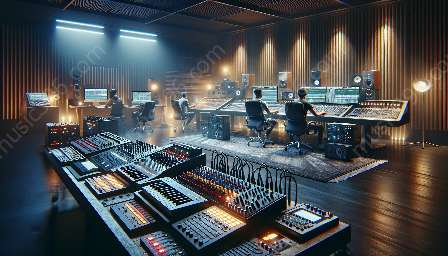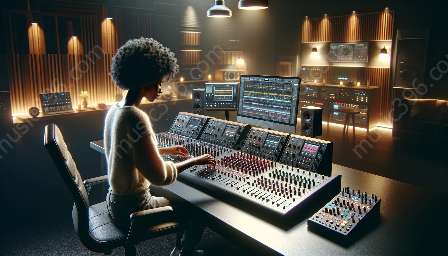Music production and music technology have been significantly shaped by the advancements in MIDI technology. This topic cluster delves into the various aspects of MIDI technology, its applications, and its impact on the music industry.
The Beginnings of MIDI Technology
MIDI, which stands for Musical Instrument Digital Interface, was developed in the early 1980s as a standard protocol for electronic musical instruments and computers to communicate with each other.
Before MIDI, various electronic instruments had proprietary communication protocols, making it difficult for different instruments to work together. MIDI's introduction revolutionized the way music was created and produced, as it allowed for seamless integration between different devices.
How MIDI Works
MIDI uses a serial interface and operates at a data rate of 31.25 kilobits per second. It transmits data in the form of digital messages that include information about musical notes, dynamics, pitch, tempo, and more. These messages are sent and received using MIDI cables or USB connections.
Unlike audio signals, which capture the actual sound of a musical performance, MIDI data represents the instructions needed to produce sound. This makes MIDI an incredibly versatile tool for music production, as it allows for precise control and manipulation of musical elements.
Applications of MIDI in Music Production
MIDI technology has become an integral part of modern music production. One of the key applications of MIDI is its role in controlling software instruments and virtual synthesizers. By sending MIDI messages to these instruments, musicians can play, record, and edit musical performances directly within digital audio workstations (DAWs).
Additionally, MIDI is used for automating parameters within music production software. This allows for the creation of dynamic and evolving soundscapes, as well as precise adjustments to various effects and virtual instruments.
Another important application of MIDI in music production is its use in controlling hardware synthesizers and other MIDI-compatible devices. Musicians can create complex arrangements and control multiple devices through a single MIDI interface, expanding the creative possibilities within a studio setup.
Advancements in MIDI Technology
Over the years, MIDI technology has evolved significantly. The introduction of MIDI 2.0 brings enhanced capabilities and expanded possibilities for music production and performance. MIDI 2.0 offers better support for high-resolution controllers, improved speed and reliability, and greater flexibility in working with a wide range of musical instruments and devices.
MIDI and Music Technology
In addition to its role in music production, MIDI technology has also influenced the development of music technology as a whole. MIDI has facilitated the creation of innovative music hardware and software, allowing for greater integration between instruments, controllers, and digital tools.
Moreover, MIDI has played a key role in the advancement of interactive music systems, live performance setups, and electronic music controllers. Its versatility and widespread adoption have led to the creation of diverse music technologies that cater to the needs of musicians, producers, and performers.
Conclusion
MIDI technology has become deeply intertwined with the world of music production and music technology. Its impact on the industry is undeniable, as it has revolutionized the way musicians create, manipulate, and perform music. Whether in the studio or on stage, MIDI continues to be a driving force behind the evolution of music and technology.

























